"Human progress is furthered, not by conformity, but by aberration."- H. L. Mencken (1880-1956)
What is an Aberration? The act of departing from the normal, the usual course. In the context of photography, it's an accidental or deliberate
deviation, diversion, distortion, as well as abnormality, eccentricity, oddity, peculiarity, or quirkiness. It could be contrived, for a specific
objective. But, the clinical explanation of aberration is an involved one. In OPTICAL Physics: it's any deviance of the rays of light such that
they can no longer be controlled nor fetched to an acute focus to form a manifest image. My objective here is to understand the many facets
of aberration, within the sphere of optics, it's influence on photography, but also recognize the mysterious role it plays as an abstract
phenomenon in our lives. Most importantly, the aesthetic in such aberrances, and those who recognize and practice it. The purpose of this
photo-essay is to keep advancing the aesthetic quotient in photographic arts.
First, the abstract: The human species is an oddity of nature, replete with absurdities. It's the only species with the capacity to think-reason,
yet, with so much at strife over resources like any other non-thinking creature. It's a species of astounding contradictions. On the one hand,
shackling themselves in savagely destructive primitive ideologies, on the other, ingenious enough to send and control the Rovers on Mars.
The best we can do is to accept the human species as nature's absolute aberration. The weirdness does not end there. Modern societies in
general, are averse to abnormality, eccentricity, distortion, divergence, and irregularity. The society, an irrational, reactive entity, always pegs
the above as mistakes, failures, therefore, repugnant. Yet, it's that certain singular individual, acutely quirky or eccentric, within the same
society, that perceives the same as the veritable and unequivocal threshold for opportunity, invention and change. What did Einstein say?
"If
at first, an idea is not absurd, it has no chance of success." A society, by it's very morphology, is predisposed to discriminate anything that
does not fit its contrived narrative circumference. An individual's foresight, is society's hindsight.

Camera shake at school concert © Raju Peddada
- Columbus set out to find the exotic land of spices: India - instead found North America
- The "addled" boy, per his elementary school teacher: Thomas Edison, the singular author of modernity
- James Joyce's redoubtable deviance: "Ulysses" was rejected all 60 plus publishers, his friend then published it.
- Two most life changing inventions: photography & internal-combustion were by an eccentric set of brothers, known as
NIEPCE brothers. Nicephore Niepce was the inventor of photography.
Philosophically: Is there any doubt that the exponential progress of our species, is, invariably, fueled by our most aberrant individuals. The
most peculiar, eccentric and weird, in their relentless mistakes and failures, propel us. It's their acute perception, their prescience, even their
clairvoyance I hazard to submit, that had enabled them to deduce first, then harness the opportunity in some aberration, some mistake, to create our employment, therefore our societies. Why can't a society see what such individuals can see is based on a simple psychological
principle: society with its billion eyes is blind, it's not equal to the one compound mental eye or intuition of an individual. Society cannot
cannot correlate, it's an organism that subsists on standard deviation, the conventional, the normal, the predictable, because, abnormality is
the discomfort zone. It's a pullulating mass of minds incapable of focus, nor vision, which is solely the function of an individual.
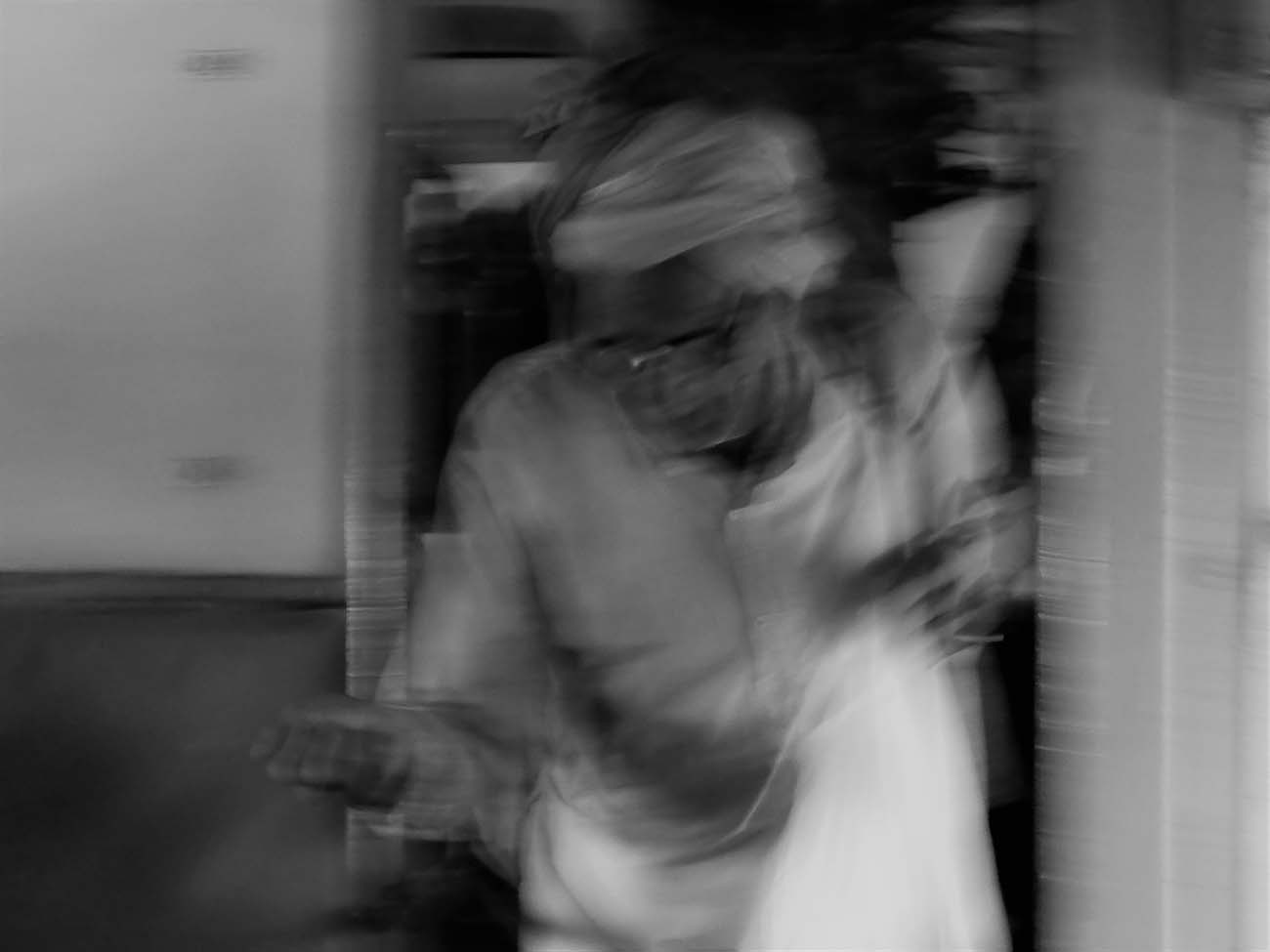
Begger on Train vibration © Raju Peddada
The constituents that make a society are varied, and it operates on the backs of its lowest common denominators, not the highest. Therefore,
it's the aberrant apostate single, not the normal moral mass, that becomes its progressive, or the regressive vector for it. The collective,
society, for the most part is the mediocre, equilibrium, its failure to see, as one symmetrical organism, is the consequence of the failure to
correlate. Only an asymmetrical individual can correlate, reason, as well as perceive beauty, while the society only reacts, to what is aberrant.
And, speaking on asymmetry, many sages of perception in Japan, throughout its history, had promulgated aberrance, natural flaws, as
symbols worthy of our adoration and worship in their Zen and Wabi-Sabi precepts. The core tenet: wisdom of the flaw, imperfection,
encompass the principles that preside over this ancient way of seeing and sensing our milieu:
Nothing is perfect - Nothing is finished -
Nothing lasts forever. For Artists and photographers, the Zen and Wabi-Sabi are rich sources for those interested in learning how to
understand, perceive and see the textures of existence - Most of all, develop the sensibility to grasp the nuances of our condition.
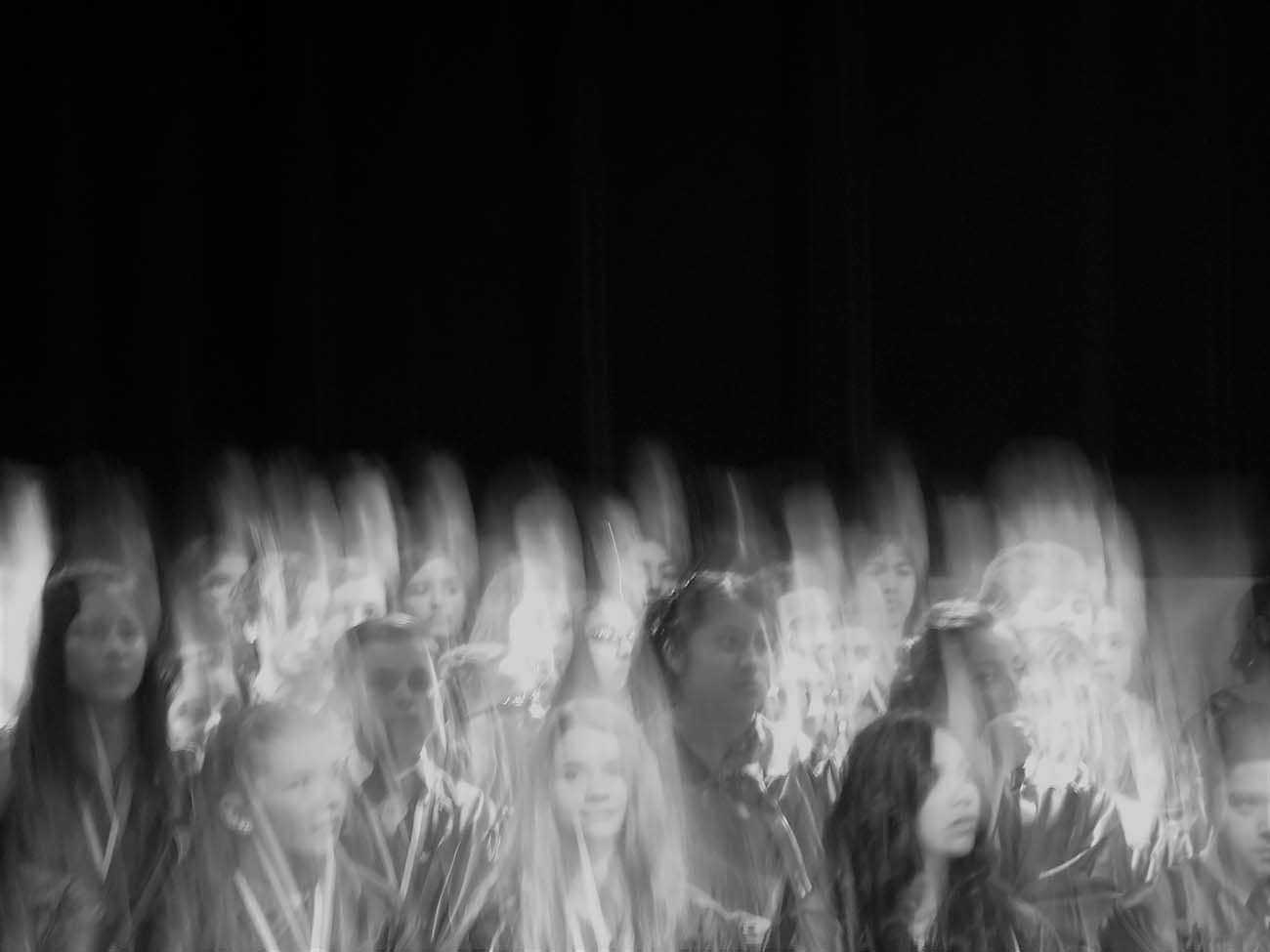
Camera shake at concert © Raju Peddada
It's a severe distortion if we, at first, did not chew a bit on the complex issue of Aberration, especially, optical physics, which
will enable us to decipher the various facets of the said phenomenon that effects photography, and other mediums of observation. What are
the elements, why it happens, and how and why it appears as it appears? Remember the Hubble Telescope, and it's aberrant mirror?Allow me
to abridge this explication to mere highlights, so as to mitigate the yawns that might assail me from across the cyberspace. The two main
types of aberrations are A. Chromatic Aberration, and B. the other, more relevant to us, is the Optical Aberration.
Chromatic aberration (CA), known as Chromatic distortion or Spherochromatism, is the failure of a lens to focus all colors at the same point.
It's a dispersion, caused by the refractive index of the lens elements, that varies with its wavelength of light, which cannot focus at one point,
causing, or manifesting itself as the fringe-or-edge of color on the perimeter of the image - a sort of fuzziness. The focal length of a lens
depends on its refractive index. Many a time, I have held my camera closer to the subject than the lens' refractive index would allow, causing
an incurable fuzziness, only when I had pulled away, did the subject come in focus, which meant that the RI allowed the focal length to
converge at a point. There are two types of CA: 1. the Axial or Longitudinal aberration, typical at long focal lengths; and 2. the Transverse or
Lateral aberration, for short focal lengths.
Optical Aberration (OA) is an aspect of the optical systems, such as the lens in various devices, like the camera, telescope, microscope and
or observation apparatus. This type of aberration occurs when light dissipates over a surface instead of being focused to a point. Focal length
of an optical system is measured by how precisely and vigorously the system converges or diverges light. For example, if my camera has a
short focal length, aberration or fuzziness will result if the shot required a lens with longer focal length for a subject far away. If I use a
device with a long focal length, on a subject that is close, guess what the result would be. We simply have to move closer or farther, to
optimize the focal length viability, or else aberration will result. In an imaging lens, aberration occurs when light from one point of the subject doesn't converge to a single point post transmission through the device. This is common to all who practice photography.
There is also the
Monochromatic Aberration, with the following aberrational components: A. Defocus, self-explanatory; B. Spherical
Aberration, due to spherical surfaces or lens not perfect; C. Coma, lens is off axis, at a different angle than required; D. Astigmatism, is when
rays propagate in two perpendicular planes and have different foci; E. Field Curvature, happens when a flat object normal to optical axis,
cannot be brought into focus on a flat plane; F. Image distortion, is deviation from rectilinear projection. Then, there are aberrations
resulting from our own mistakes: wrong lenses, being out of focus, physical vibrations or shake, external conditions, pressing vs squeezing,
atmosphere, etc., etc.
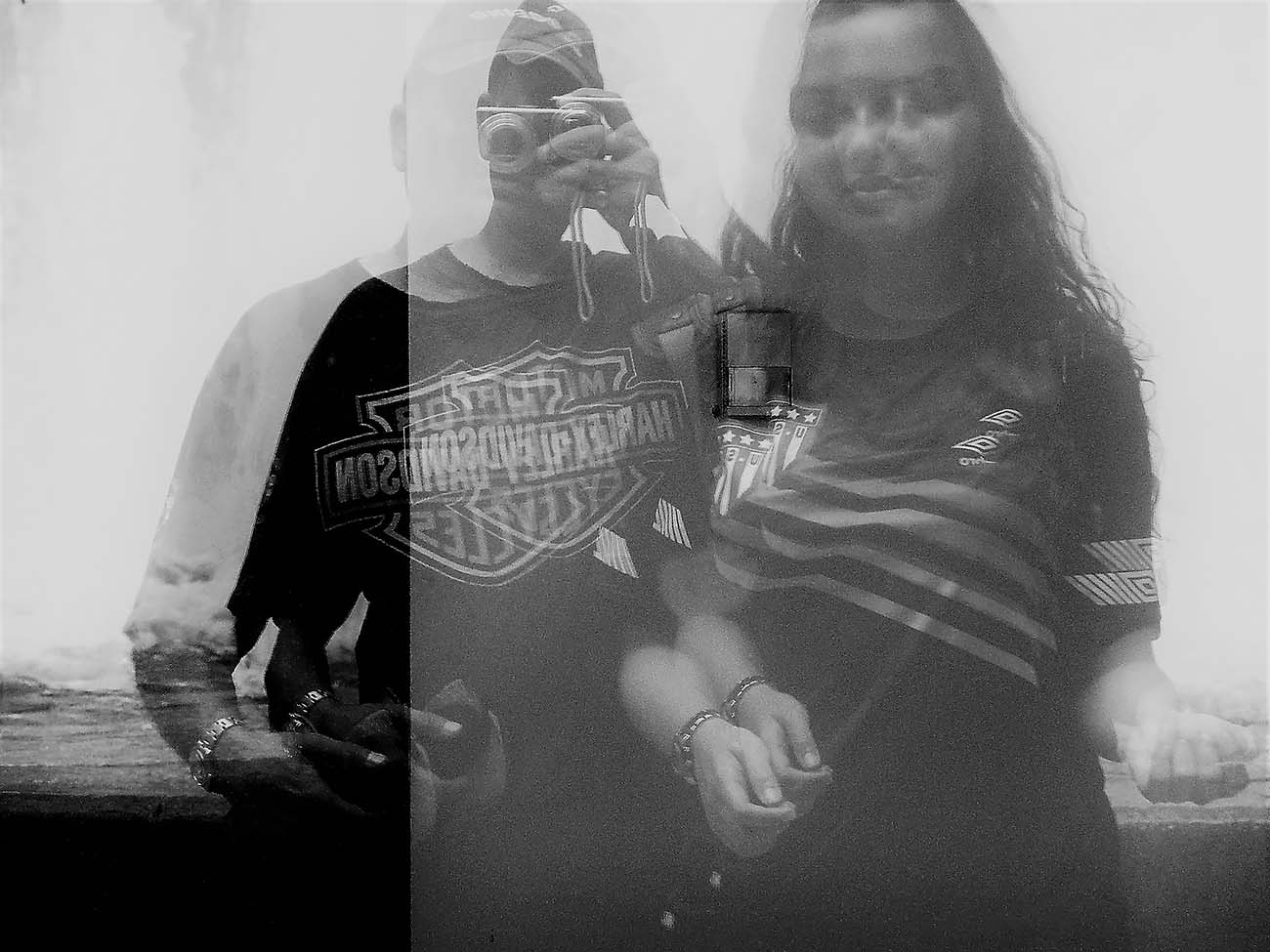
Friend shoves at the shutter release © Raju Peddada

3 inscrutable men at toll a booth metaphor for govt © Raju Peddada
Aberration had also been a large aesthetic opportunity canvas for some intrepid artists and photographers, that had practiced high arbitrary
and abstract imagery. The practitioners were demented geniuses, (in hindsight, of-course) like Mozart, Picasso, Francis Bacon, Anthony
Burgess, James Joyce, Lawrence Sterne and latter modernists like Juilan Rios - who had, and have pushed the frontiers of art, and therefore,
our aesthetic quotients and entertainment. How about Anthony Burgess's inventive masterpiece: "A Clock Work Orange," for its syntactical
inventions and whole new vocabulary? I am not a practitioner of the said art, but, it's always wondrous to find beauty in something that
everyone else considers a flaw. I have my own examples of such flaws, transforming a mundane composition to something magical, owing
to an involuntary aberration.
Finally, aberration is also synonymous with illusions, as well as delusions. This, I think is more rational and pertinent than even the materialscientific
explication above, because, the subject of every photograph is the human condition, in the context of everything else on this earth,
even in Sebastiao Salgado's remote landscapes. Aren't we all living off of illusions? Aren't we deluding ourselves into a myriad grand
visions, creating less by destroying more. And sustaining destruction, by fanning ideologies to shackle ourselves into nothingness? The only
redemption we can muster is in the recognition that, all our arrogant blunders, twisted vanity, and even our steamy odorous marital
composts, yield beauty - saplings, that would shade and grow a future. That is the human condition. We cannot rectify this aberration.

Violent shake to Beethoven's 5th © Raju Peddada

Train vibration results in aberrant blonde © Raju Peddada
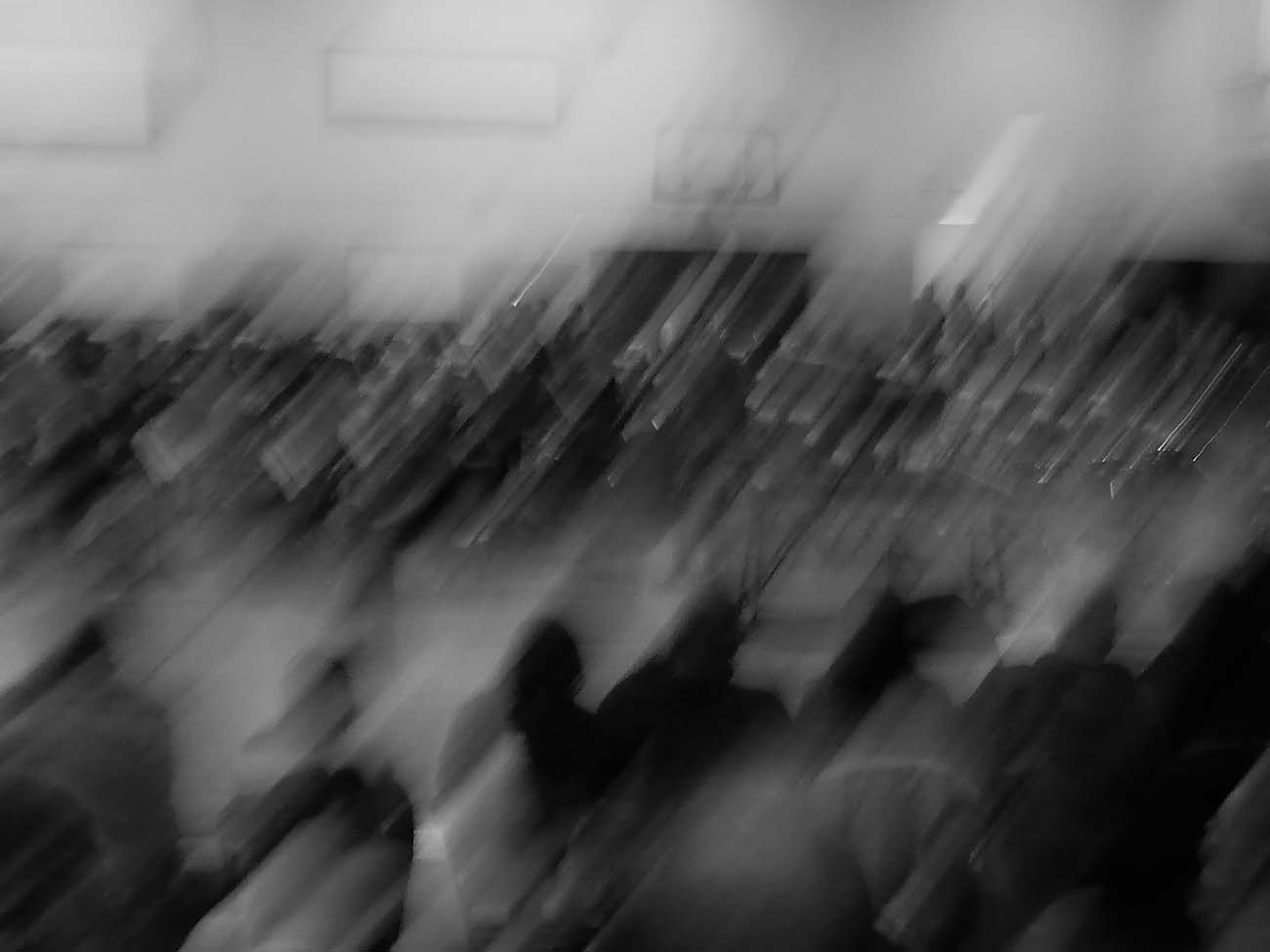
A shove from the left © Raju Peddada

Moisture aberration © Raju Peddada
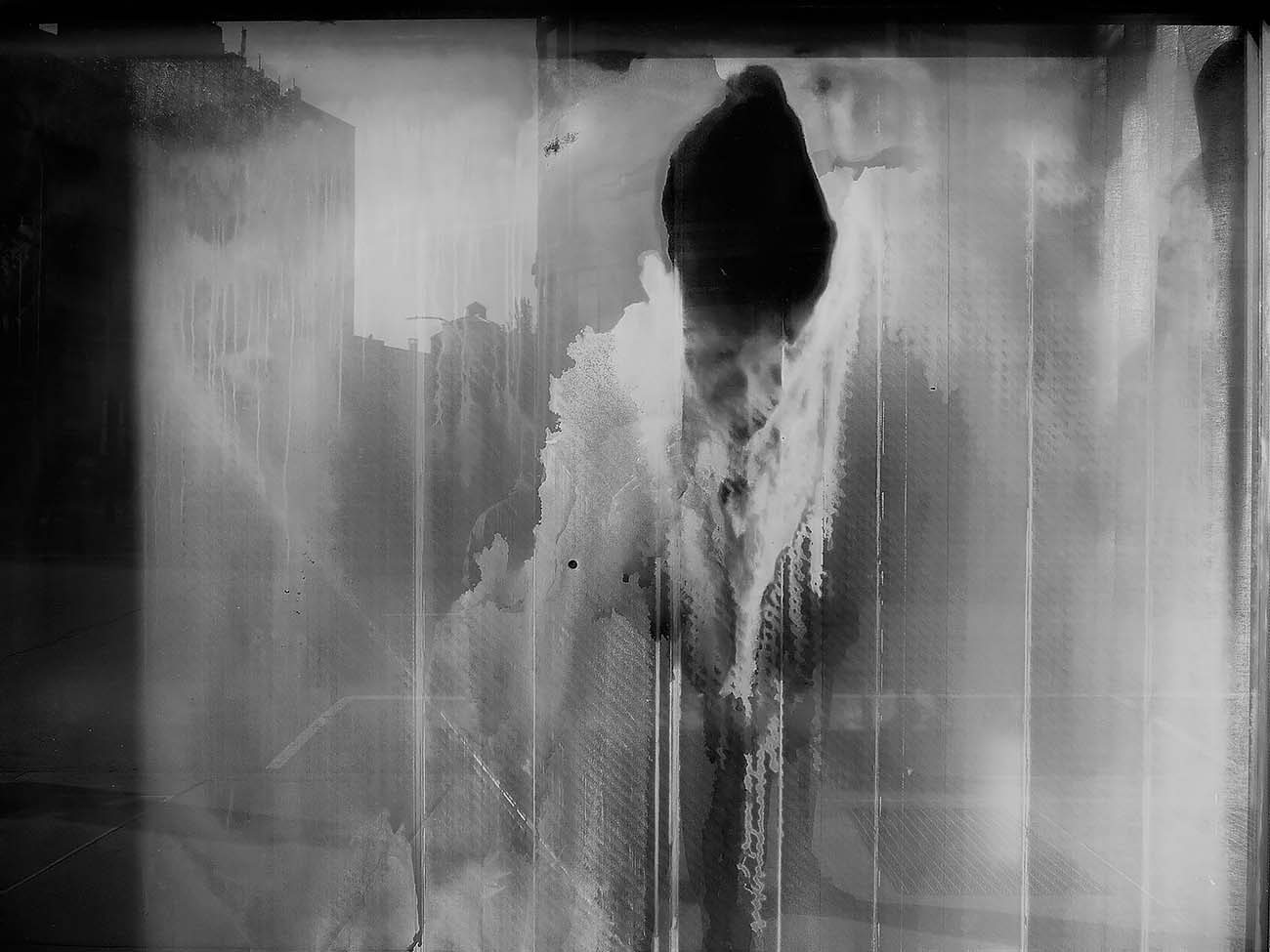
Mysterious melting entity in the window © Raju Peddada

Lens caught something other than what-I saw as my son © Raju Peddada
Copyright © Raju Peddada, September 7, 2021. All Rights Reserved on Text & Images
More Articles by Raju Peddada
Dichotomic Photography
The Surreal is Real 











